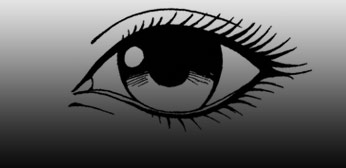Shortsightedness or myopia is a condition in which light rays focus in front of the retina, instead of directly on the surface of it, causing shortsighted people to squint in order to get a sharp image of an object. To shortsighted people distant objects appear blurry, but they see close objects relatively clearly. The sign of shortsightedness, therefore, is the impossibility of clear vision of distant objects, such as TV, cinema screen, blackboard, or objects in front of the automobile when driving. Shortsightedness affects people between the ages of 6 and 40. After the age of 45, shortsightedness reduces, i.e. vision improves.
Causes:
There are three factors that determine the focus of the eye: cornea, lens and the length of the eye.
Cornea, the transparent front part of the eye, refracts 70 to 80 % of the light rays entering the eye. Lens refracts 20 to 30 % of the rays. The length of the eye is important for focus as well. If the eye is too long, the light rays focus in front of the retina, which results in shortsightedness. It is the opposite with farsightedness – if the eye is too short, light rays focus behind the retina.

Classification:
Shortsightedness can be classified by degree into:
- 1.low: up to -3 diopters
- 2.medium: between -3,25 and -8 diopters
- 3.high: -8,25 or more diopters
It can also be classified by cause:
- 1.curvature: excessive curvature of cornea
- 2.axial: eye’s axial length is longer than 24 mm
- 3.index: variation in the index of refraction of lens, vitreous humour or aqueous humour
- 4.accommodational: causing accommodational spasms
By clinical entity it can be:
- 1.benign
- 2.malign
Benign shortsightedness, also known as school shortsightedness, appears usually between the ages of 6 and 15, it doesn’t go over -8 diopters and it doesn’t cause complications on retina or choroid. It is corrected with the use of the weakest glasses that give good central vision. Excessive correction can lead to farsightedness with accommodation difficulties.
Malignant shortsightedness is a rare phenomenon. Diopter increases with sudden or gradual emergence of degenerative changes in the retina, choroid, vitreous humor, sclera, optic nerve. In this case important is the prevention, that is: choosing a suitable occupation at which the eyes are not strained for a longer period, adequate diet enriched with vitamins, hypercorrection – correction smaller than diopter in order to decrease accommodation. Theory that hypercorrection increases convergence and urges shortsightedness isn’t generally accepted. It is believed that the full correction, which ensures stronger accommodation, increased eye strain, and aggravation of degenerative complications, is more dangerous. Except these preventive measures, at malignant shortsightedness mediums for the expansion of blood vessels in the form of drops and injections in the eye are used. Degenerative changes are removed by laser.
Treatment:
Shortsightedness is treated by wearing eyeglasses, contact lenses or by refractive surgery. Depending on the degree of shortsightedness, eyeglasses and contact lenses should be worn all the time or just occasionally, when long distance watching is expected, for instance, while driving, watching a movie, in class, etc. At shortsightedness diopter has a negative sign. The higher the number that indicates shortsightedness, the severer the condition.
Refractive surgery can completely remove the problem or reduce it. The most common procedure of this surgery is by laser.
Photorefractive keratectomy or PRK is the laser removal of a layer of corneal tissue, which aligns cornea and enables light rays to focus nearer the retina.
LASIK (laser assisted in situ keratomileusis) is the most common laser procedure in which a small lobe of tissue on top of the cornea is cut out and then a bit of the corneal tissue is removed by laser, after which the lobe is returned to its place.
LASEK (laser subepithelial keratomileusis) is a relatively new refractive surgical technique which combines LASIK and PRK (2). Same as LASIK, this method uses “lobe” and, therefore, vision improves faster, there is lesser pain after surgery, and blurred quality of cornea is reduced and epithelial cells, as after PRK, heal faster. As at PRK, this method is also performed on the front part of cornea so there are no complications with the lobe. Therefore, this method is recommended for patients who have significantly higher risk of developing a lobe complication, as do have those with small opening of lids, those with deeply laid eyes, those with dystrophy of limiting membrane of the cornea and those with extremely sharp or flat cornea. This method protects the stroma of the cornea (the middle layer) at persons with thin cornea or high shortsightedness, which is usually not characteristic of LASIK. This method is also recommended to people whose job or recreational activities bear higher risk of corneal injury.
Orthokeratology is the practice of using special contact lenses which during time transform the cornea and correct shortsightedness. Depending on the severity of the condition, sometimes they can be worn only by night. Orthokeratology is a very controversial method among opticians. While some report on amazing results, others say that the effect is only temporary.
A newer method of solving mild shortsightedness is insertion of a plastic ring into the cornea which also transforms cornea’s shape. The advantage of the ring is that it can be removed if problems occur or it can be adjusted if the diopter changes.





 July 16, 2012
July 16, 2012